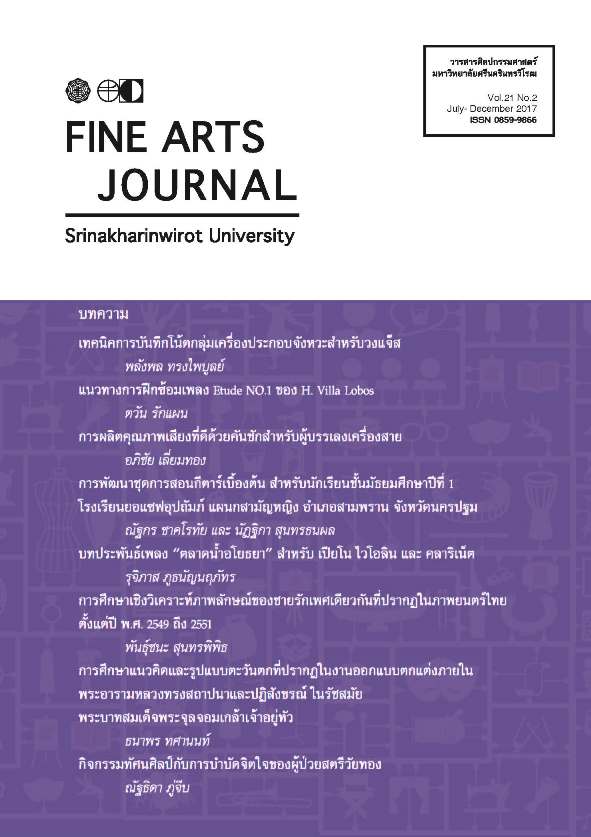การผลิตคุณภาพเสียงที่ดีด้วยคันชักสำหรับผู้บรรเลงเครื่องสาย
Keywords:
Bow Technique, Tone Production, Dynamic Control, String PlayersAbstract
This study comprises the essential bowing techniques for string instruments that Violin, Viola, Cello and Double Bass players must learn and master. Apart from cultivating the skills for precise fingers placement on the left hand needed to produce the correct intonation and agility, players must also learn the mechanics of the bow arm and how it worked. These techniques allow the player to produce mature characteristic tones, control different sound dynamics, manage sound quality and sound intensity level crucial to string music performance. They are the means to create emotional and expressive performance with virtuosity that is truthful to the music composer’s intentions. All string players where a bow is used, from Violin, Viola, Cello to Double Bass musicians, must perfect the bowing techniques. They must master the three key elements which are speed, weight and point of contact to the strings. These methods give the player ability to control tone quality, rhythm, dynamics and articulation in order to perfectly deliver insightful performances to the audience with due reverence to the composer.
Downloads
References
เกศกะรัต
อภิชัย เลี่ยมทอง. (2555). หลักสำคัญสำหรับการฝึกซ้อมดนตรีเพื่อประสิทธิภาพสูงสุด. วารสารดนตรีรังสิต. 7, 1: 29-39.
อภิชัย เลี่ยมทอง. (2560). เอกสารประกอบการสอนวิชาดนตรีปฏิบัติ 1 (เชลโล). ปทุมธานี: สำนักพิมพ์ มหาวิทยาลัยรังสิต
Galamian, I. (1962). Principles of Violin playing & Teaching. Englewood, NJ: Prentice-Hall.
Gendron, M. (2001). The Art of playing the Cello. Mainz, Germany: Schott.
Gerle, R. (1995). The Art of Practising the Violin. London, England: Stainer & Bell.
Jean Smith, G. (1993). Cellist’s Guide to the Core Technique (2nd ed.). St. Louis, MO: MMB
Music.
Snitkin, Harvey R. (2001). Practicing for Young Musicians, You are Your Own Teacher, CT:
HMS Publications.
Tortelier, P. (1985). How I play How I teach (3rd ed.). London, England: Chester Music.






